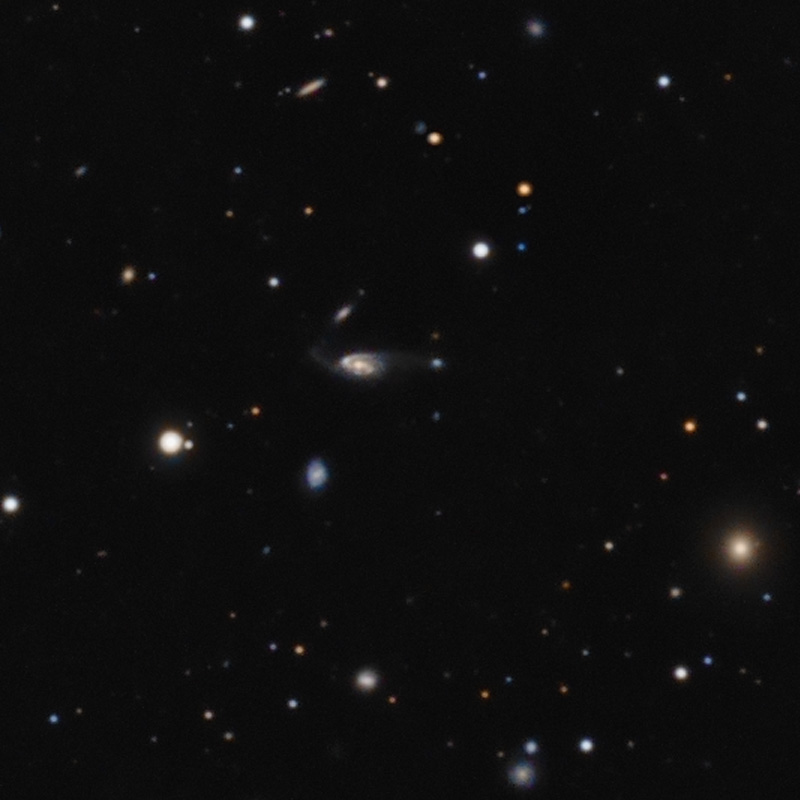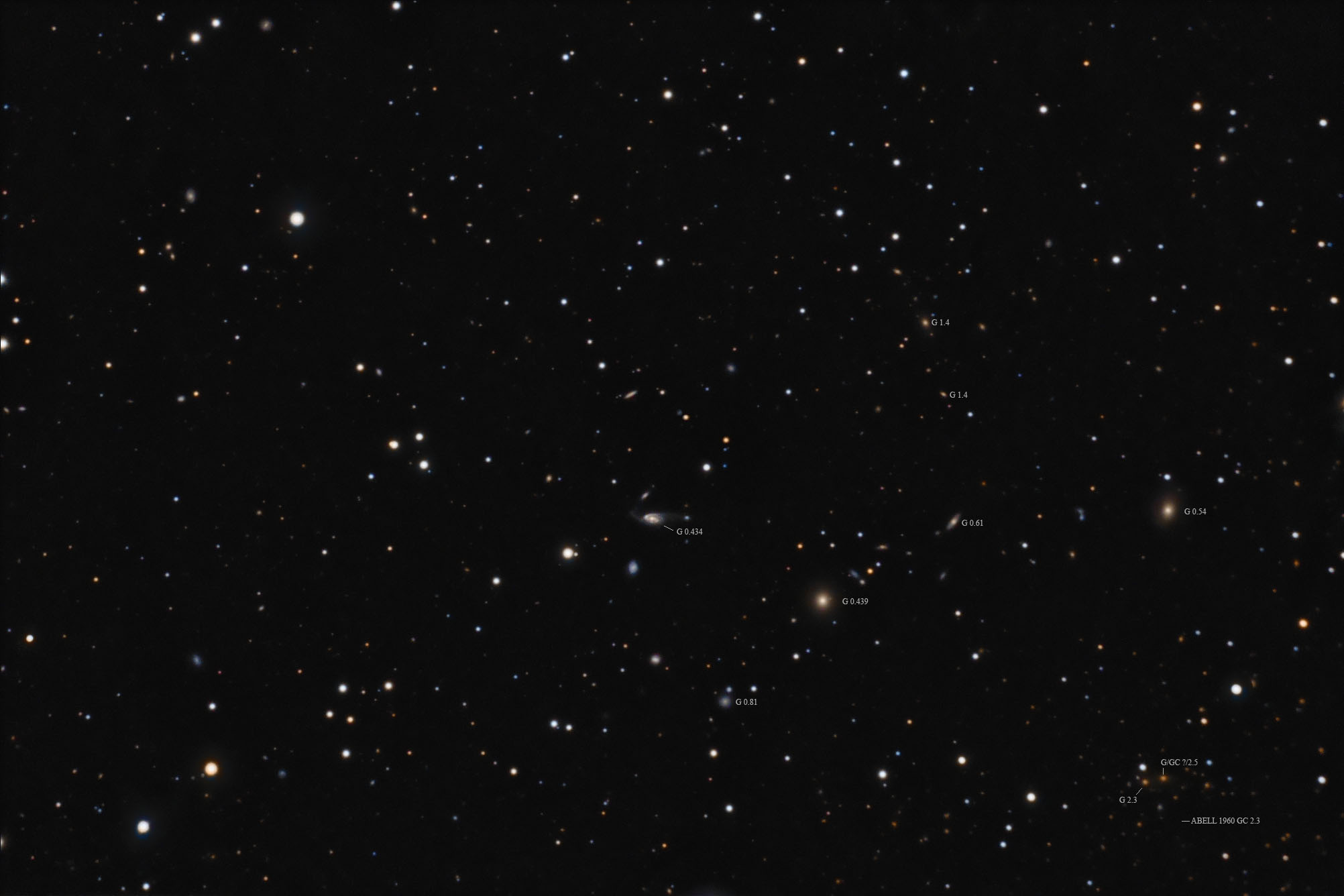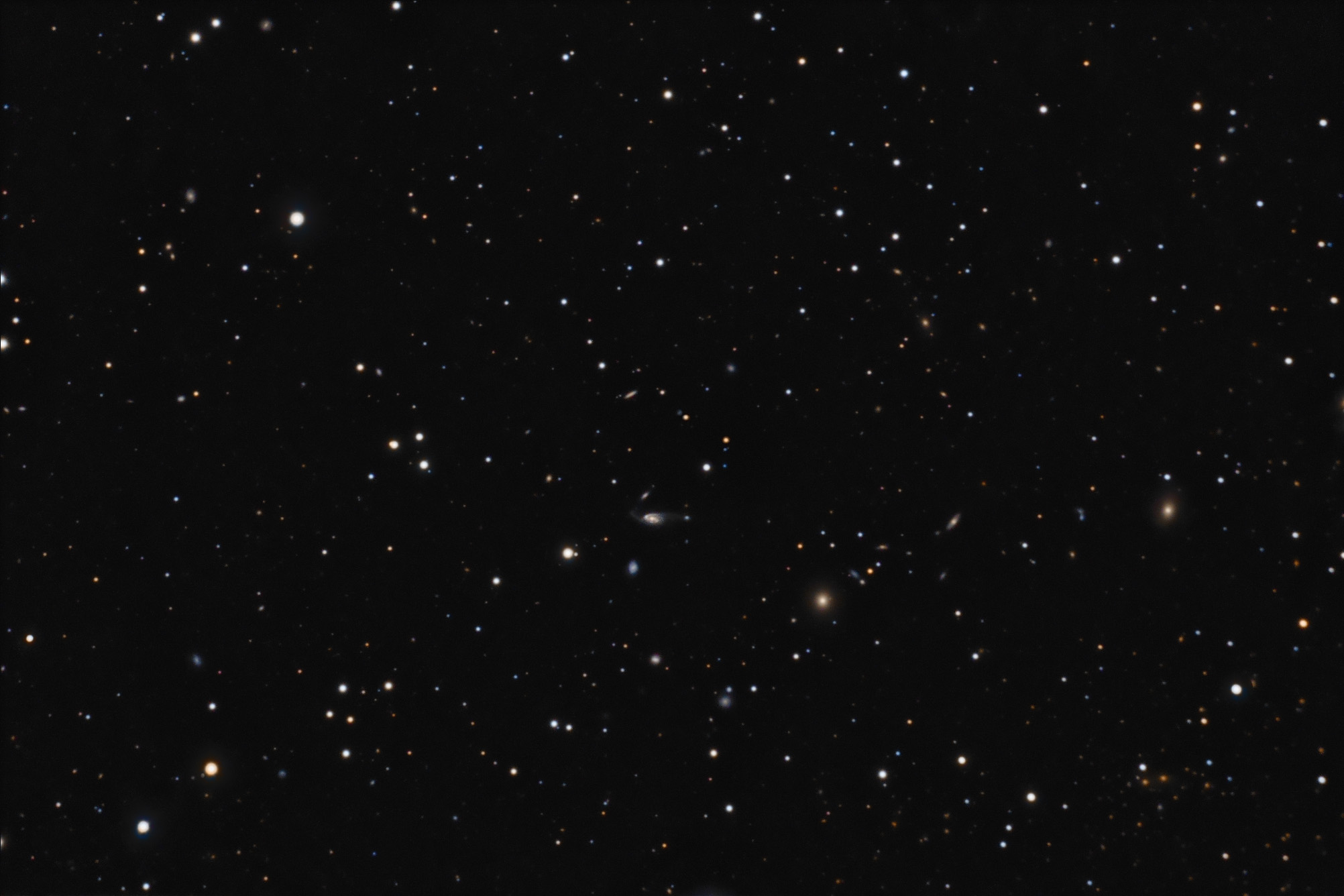Object name: ARP064 Arp 64 consists of three of the four galaxies that make up UGC 9503. They are located in Bootes about 434 million light-years away. Arp put them under his classification of spirals with small high surface brightness companion on the arms. In this case one companion for each arm. Or as Arp put it "Both arms lead toward companions." At least that's how it looked to Arp.
Redshift data indicates the primary galaxy, PGC 052698, is about 430 million light-years away. But there is no redshift data for either companion. (EDIT: Since this was written the companion above the eastern end of PGC 052698 (LEDA 214322) has virtually the same redshift so is likely a true companion.) The western companion is SDSS J144522.63+192758.3. The one to the northeast is LEDA 214322. As mentioned neither have a redshift measurement that I could find. Without this measurement, it is hard to prove either are true companions. The latter isn't actually on an arm. The arm does make a short jog in its direction but ends abruptly. Maybe a longer exposure would show a connection not seen in my image. In Arp's image, this small galaxy does seem a bit distorted on the side toward the arm. I don't see this however in either the SDSS or my images. The other companion is seen virtually on the end of the other arm. Again it doesn't prove anything but is suggestive.
This accounts for three of the 4 galaxies NED refers to as constituting UGC 9503. Arp doesn't include the fourth in his image. It is the very blue disk galaxy to the south-southeast of Arp 64. It shows a small but faint plume to its south and the disk is rather distorted. Unfortunately, it too has never had a redshift measurement taken. How many of these 4 are truly related I have no idea. Apparently, little research has been done on this group.
To the southwest is the large elliptical like golden galaxy (near the right edge of my enlarged and cropped image), ARK 458. This is a catalog of emission line galaxies. It does have a redshift distance that puts it at 439 million light-years. It is a member of the same group as Arp 64. Being an emission line galaxy it is quite active. It is also an IR galaxy. These two pieces of information are suggestive that it may have had an encounter in the past to trigger such activity. Though this isn't necessary. So could it be the cause of Arp 64's drawn-out arms rather than the two companions? It shows no hint of any distortion, however. Sorry, I have lots of questions but no answers.This accounts for three of the 4 galaxies NED refers to as constituting UGC 9503. Arp doesn't include the fourth in his image. It is the very blue disk galaxy to the south-southeast of Arp 64. It shows a small but faint plume to its south and the disk is rather distorted. Unfortunately, it too has never had a redshift measurement taken. How many of these 4 are truly related I have no idea. Apparently, little research has been done on this group.
Toward the lower right corner is an obvious galaxy cluster with two major galaxy. The one on the right, SDSS J144433.71+192121.5 has a spectroscopic redshift measurement putting it at 2.3 billion light years away. The one on the right, SDSS J144431.76+192127.4 marks the center of the cluster, MaxBCG J221.13237+19.35762. The galaxy has no redshift data but the cluster has a photographic redshift distance of 2.5 billion light years. Since a photographic redshift isn't as accurate as a spectroscopic redshift I assume the 2.3 billion light years of the other major member is likely more correct. It is listed as having 26 members but no size is given. This appears to also be the galaxy cluster Abell 1960 though this has a different center as shown on the annotated image. Abell 1960 is described as having a diameter of 16 arm minutes and a distance of 2.3 billion light years, same as one of the galaxies above.
Arp's image
http://ned.ipac.caltech.edu/level5/Arp/Figures/big_arp64.jpeg
14" LX200R @ f/10, L=5x10' RGB=2x10'x3, STL-11000XM, Paramount ME | | 

